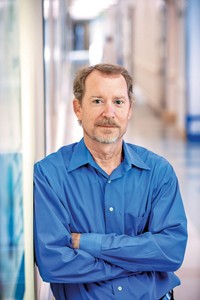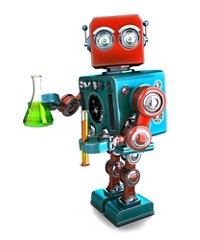Advertisement
Grab your lab coat. Let's get started
Welcome!
Welcome!
Create an account below to get 6 C&EN articles per month, receive newsletters and more - all free.
It seems this is your first time logging in online. Please enter the following information to continue.
As an ACS member you automatically get access to this site. All we need is few more details to create your reading experience.
Not you? Sign in with a different account.
Not you? Sign in with a different account.
ERROR 1
ERROR 1
ERROR 2
ERROR 2
ERROR 2
ERROR 2
ERROR 2
Password and Confirm password must match.
If you have an ACS member number, please enter it here so we can link this account to your membership. (optional)
ERROR 2
ACS values your privacy. By submitting your information, you are gaining access to C&EN and subscribing to our weekly newsletter. We use the information you provide to make your reading experience better, and we will never sell your data to third party members.
Pharmaceuticals
Movers And Shakers
Bruce Roth Looks Ahead
As Lipitor leaps off the patent cliff, its inventor assesses the state of the drug industry
by Carmen Drahl
October 30, 2011
| A version of this story appeared in
Volume 89, Issue 44
Bruce Roth was just 31 years old when he first made atorvastatin, a small molecule designed to cut high cholesterol. Medicinal chemists know the rest of the story. Roth went on to scale the management ranks in the pharmaceutical industry, today serving as vice president of discovery chemistry at Genentech. And his most famous handiwork, better known by its brand name Lipitor, became the biggest drug in history, pulling in more than $10 billion in sales in 2010 alone.

In November, Lipitor’s patent will expire in the U.S. In the coming year, the same will happen for several other blockbusters, including the clot-preventer Plavix and the asthma drug Singulair. Patients will save money by taking generic versions of these drugs. For pharmaceutical companies, the looming “patent cliff” is bringing upheaval.
It’s enough to make any chemist wish for simpler times. But Roth says he wouldn’t trade the knowledge gained in the intervening years for peace of mind. Since 1985, the first time atorvastatin emerged from Roth’s round-bottom flask, “there’s been a sea change in medicinal chemistry,” he says.
“When I look at the number of columns in the data tables my chemists need to look at today, the number of things they’re trying to juggle, it’s staggering,” Roth says. In the 1980s, “you had to essentially nominate a development candidate to get data that today we get right after we synthesize a molecule for the first time.”
But with more data came more responsibility, Roth explains. Even as molecules with vastly improved druglike properties emerged from the labs, more sophisticated tests and regulatory hurdles surfaced, making success more elusive.
It didn’t help matters that drug companies’ strategies also changed since the decade of New Wave music and leg warmers. Sales of Lipitor and its ilk fueled meteoric growth. “In the ’80s and ’90s it was all about growth and expansion,” Roth recalls. “But the industry got a little bit lazy in terms of thinking that this blockbuster era would continue.”
When it came time to feed the pharmaceutical beast, few disease areas or biological targets had the blockbuster taste that would sate its appetite, so many small-scale projects languished. Firms turned to mergers and acquisitions to fill pipelines. The shifts have cost drugmakers dearly, Roth says, both in the loss of thousands of talented scientists who’ve been laid off and in the lost diversity of approaches to tackling problems. “We’ve eaten our own here,” he laments. “Since we got to the 21st century it’s been all about layoffs and cutbacks and mergers and offshoring.”
Roth himself has been on both sides of the chopping block. He was one of several thousand laid off in 2007 when Pfizer closed the Ann Arbor, Mich., site where he worked. He’s also had to let go scientists who worked for him, and he says he understands the cost pressures that lead companies to those decisions. Still, “as an American chemist it is something you agonize over,” Roth says, “because it isn’t clear where U.S. chemists trained in organic synthesis and medicinal chemistry are going to find their jobs in the future.
It’s not just the job count that’s taken a hit since the days of Lipitor’s discovery, Roth says. Drug companies have fallen precipitously in the public eye. Recent opinion polls, such as a Harris Interactive poll released in late 2010, tend to place drugmakers’ reputation and trustworthiness on par with that of tobacco companies. “It drives me crazy,” Roth says, because vaccines and medications save lives. “Obviously, the industry has made mistakes, but we’ve not done a very good job of being spokespeople for what we do.”
Roth thinks drug companies should work to once again cast themselves as innovators to pull out of both the financial and reputational doldrums. “To the extent that the industry has refocused on life-threatening diseases, on conditions where there’s no existing therapy, that is helping our image even now,” he adds.
Evidence that many protein-protein interactions and transcription factors can contribute to disease is piling up, but companies don’t have systematic ways of reining in those problems with a drug. It’s less risky to work on established targets such as ion channels or kinases, but that doesn’t necessarily lead to first-in-class drugs, he says.
“Perhaps we’ve conceded some of that to academia and smaller biotechnology companies,” Roth says. “But I would hate to think that large companies would not be major players in trying to expand the number of druggable targets. We have a lot of resources to bring to bear, but it’s risky. And unfortunately the industry has in many respects become risk averse.”
As the blockbuster, one-pill-fits-most business model disappears, companies must also invest even more than they do already in diagnostics that can detect which patients will respond to new drug candidates and which won’t, he adds.
“I have been really fortunate to work in what I think we will look back on as being the heyday of the pharmaceutical industry,” Roth says. “The sad thing looking back at my career is that as an organic chemist there are very few things that I could’ve imagined that would be more rewarding than making medicines. And yet in the future, there will be many fewer positions like mine.”





Join the conversation
Contact the reporter
Submit a Letter to the Editor for publication
Engage with us on Twitter